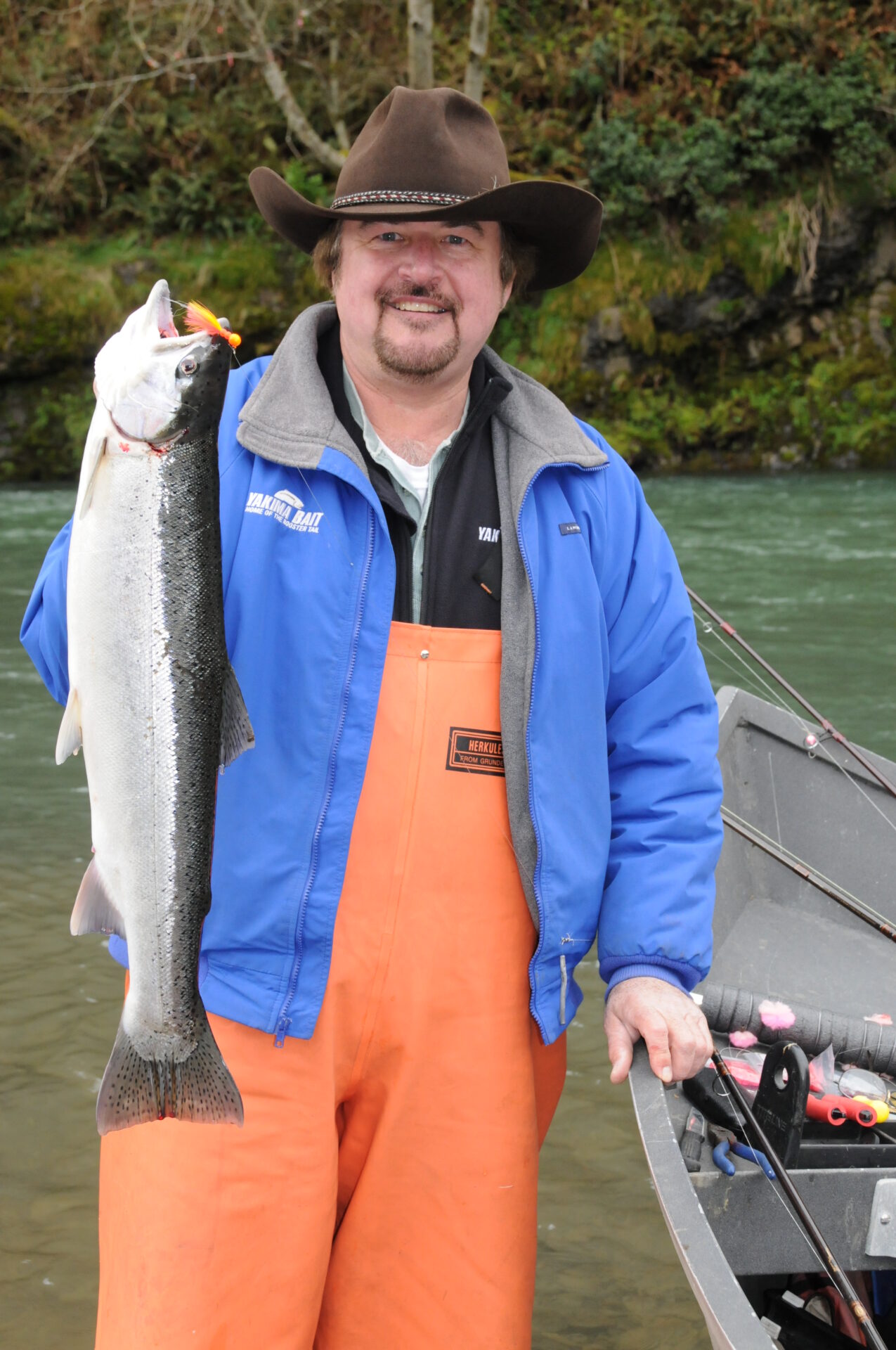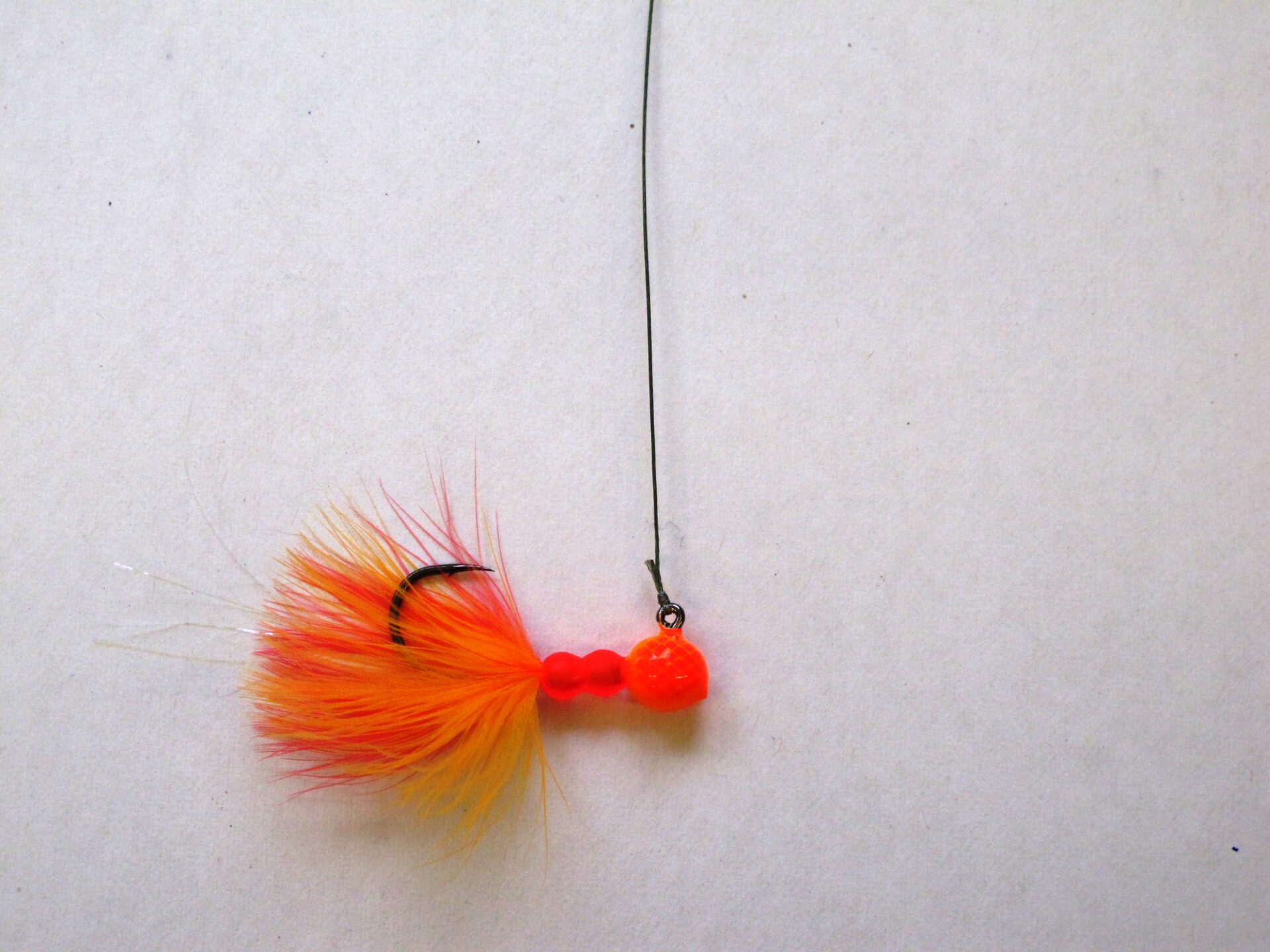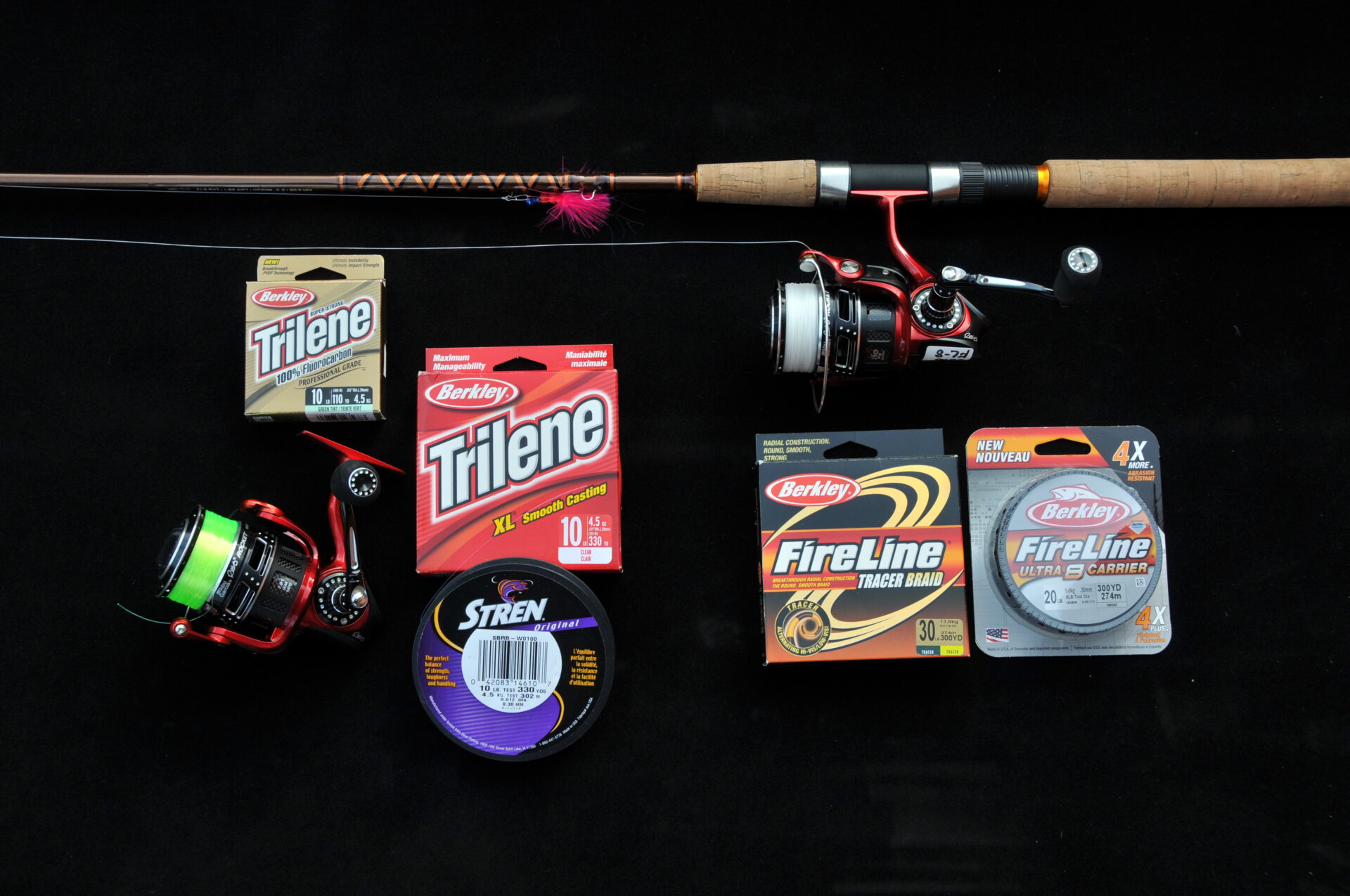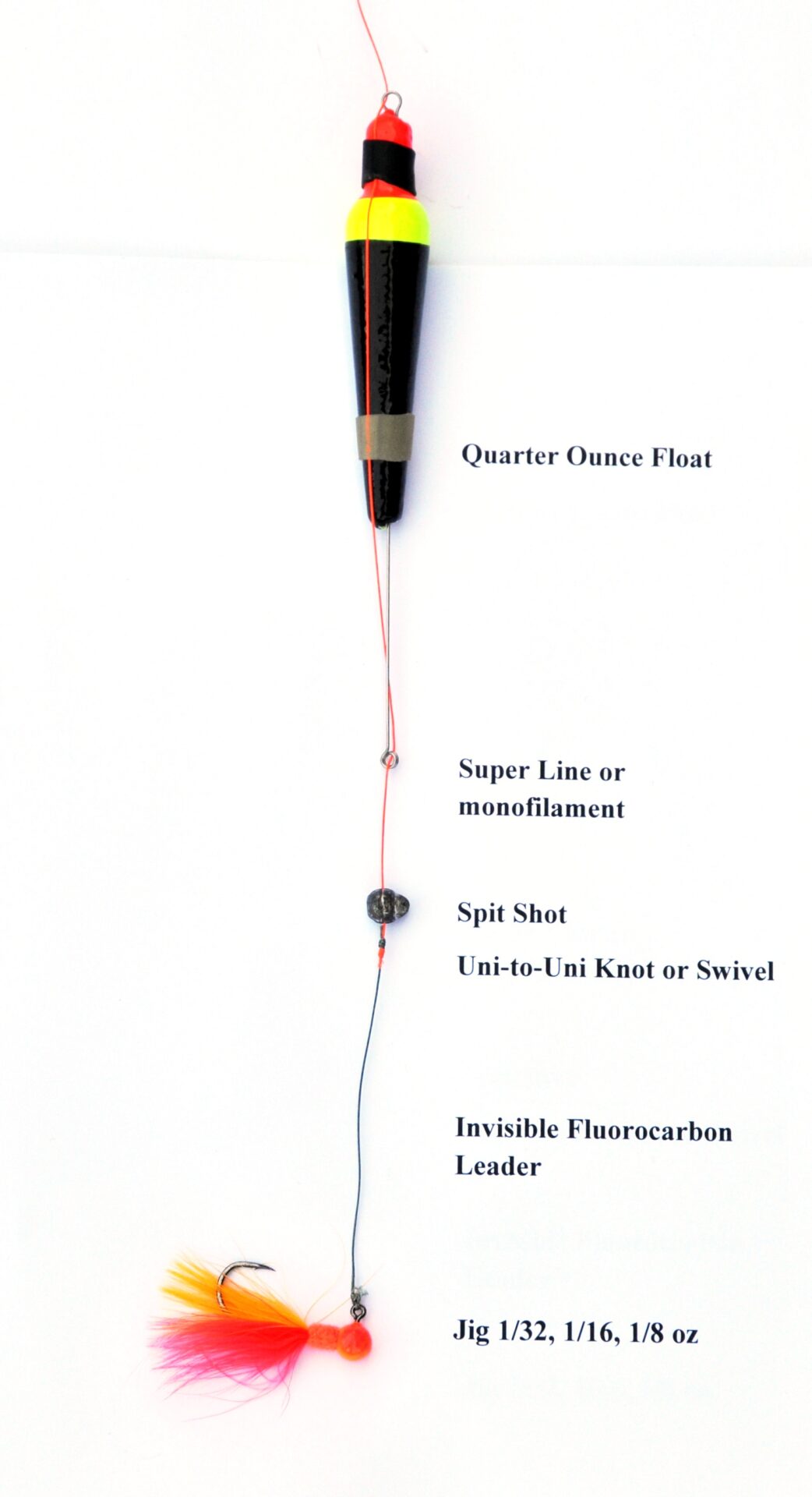Float Fishing Jigs for Big and Small
By: Buzz Ramsey
Fishing a jig in combination with a float is one of the easiest fishing methods to master and can produce quick limits, even for inexperienced anglers, as all you need do is watch your float and set the hook when a fish pulls it under. By positioning your jig above bottom, even if only a foot or two, you can avoid the hassle of having it snag bottom.

I’ve had success catching many different fish types by suspending a jig under a float. And while it’s generally true that smaller fish prefer tiny jigs, it’s amazing how even big fish like steelhead will go for 1/16 and 1/32 ounce jigs given clear water conditions.
As you may know, bass, crappie and trout will most often respond to colors that mimic natural forage. Walleye and steelhead can go for the naturals and bright colors too; it just depends on conditions and what natural forage they might be focused on.
The general rule is to employ natural colors like, black, brown, green, yellow, or white when the water is medium to clear, and orange or chartreuse when the water is turbid. And while bright colors are mostly reserved for walleye and steelhead they can, at times, produce when used for other fish types too.
Rigging is easy, since all you need is a bobber threaded on your main line with a jig suspended below it. Because you’ll be fishing different water depths, requiring you to vary the distance from your bobber to jig, you will want to choose a bobber style that can be quickly and easily moved up and down your line via a friction fit.
Although monofilament lines work and perform best during freezing conditions, they don’t float very well as compared to braided super-lines, which is the main reason a growing number of anglers are employing super-lines for this fishing method. Hi-tech super-lines, like Spiderwire, offer thin diameter, have almost no stretch (this helps ensure strong hook sets), float well (especially when treated with fly-line dressing), and handle like a dream on a spinning reel because unlike monofilament, they absorb line twist.
Whatever super-line you select, you will need to rig a two-to-three foot length of clear monofilament or invisible fluorocarbon leader to its end and attach your bobber to your main line. A Uni-to-Uni knot works best when splicing mono or fluoro leaders to super line.
No matter the jig size or color employed, you will want your jig to ride horizontal in the water when suspended under your float. This can be easily done by positioning your line tie at the top of the hook eyelet. To ensure your knot grips the eyelet securely, it’s important to cinch it down tightly. The idea behind your jig riding horizontal is for it to mimic an aquatic bug, fish during the aluvian stage of development, swimming fry, or small fish.

Because your bobber is stationary on your main line and distance from your bobber to jig might range from just a few feet to eight feet or more, it’s to your advantage to select a longer rod than you might otherwise use. For example, I employ a seven to eight foot rod for trout and panfish and a nine to 10 foot rod when chasing steelhead. When it comes to reels, it’s mostly spinning reels that anglers use for this method because they facilitate the casting of light-weight riggings.

Adding scent to your jig can give you an advantage over other anglers. One that works well and not bundle the jig dressing together is a new one called Rooster Tail Scent Spray. And while this fish attractant was developed so as to not matt down the hackle on a Rooster Tail spinner it will do the same for jigs dressed with marabou or other body material.
You can add to the effectiveness of your jig by tipped the hook with live, dead or prepared bait. Many anglers targeting bass, panfish and walleye tip their jigs with worm, leech or minnow. Scent filled artificial like PowerBait or Gulp! work too and come in a variety of shapes, sizes, and colors.
And while Midwest anglers chasing steelhead might choose natural baits like a wax worm or wiggler when tipping, one favored by west-coast anglers is a two to three inch section pinched from the tail end of a scent-filled worm – a pink PowerBait worm is a regional favorite.
Bobbers are available in a variety of shapes and sizes. And while a round shape might work just fine, pencil-shaped floats can signal a lot more about what’s going on. As an example, a long float will tip sideways if a fish is swimming horizontal with your jig. Of course most fish will pull your float under, which is particularly true if you position your jig just above where fish are holding.
Living in the Pacific Northwest, I spend a lot of time fishing steelhead in rivers.
Most anglers that chase steelhead and trout understand that a jig suspended under a float produces best when and where the water is slow moving. This makes fishing with a bobber n’ jig the go-to method during times when rivers are low, for targeting fish in slow-moving holes, and can be amazingly effective for fishing current edges – that is: where straight-running current and slack water meet.
When navigating rivers, steelhead hold in fairly shallow water, that is, water less than ten feet deep. Water four to eight feet deep, moving about the speed of a person’s brisk walk, is where they spend most of their time. They also like to hold in “tail outs” (the downstream one-third of a hole, pool or drift). Other preferred holding areas include immediately downstream from an underwater drop off, where a steep bank extends into the river, and (as mentioned above) along current edges.
What most anglers do is cast their outfit out, across and slightly upstream, pick up excess slack line, and allow their float (with jig suspended under it) to drift along in the current. Your drift is complete when your outfit nears the tail out, jig begins hitting bottom, or you cannot eliminate line drag by mending, which is when you will need to reel in and cast again.
Float fishing is a series of casts, drifts, and retrieves. Because you’re fishing with your eyes rather than by feel, you’ll need to keep tabs on your bobber at all times. When your bobber goes down/disappears (signaling a fish has taken your jig) you must quickly/immediately set the hook.
In all cases, a drag-free drift with your float moving at or a bit slower than the river current is critical to success. If you’re fishing a current edge on the near side of the river, you should have no problem with line drag. It may be a different story if you’re casting out into a hole or drift where the current, especially a strong one, can grab your main line the moment it hits the water surface and push it downstream faster than your float.
One way to reduce or momentarily eliminate line belly is to mend your line. Line mending is something fly anglers do, for the same reason, to prevent their fly from skating downstream too fast. To mend your line, start with your rod at a low angle and pointed at your float, progressively pull your rod up and backward (toward you) while rolling your rod tip and line upstream. When you mend, it’s important to do so aggressively enough that your main line will be tossed upstream all the way to your float.
Casting out at a slight downstream angle and feeding line off your reel fast enough that your bobber won’t be overcome by line drag can reduce or eliminate the effects of line belly on your bobber. If you’re a boater, you can cast out to the side too, but you may find better success and eliminate all line drag by anchoring above the area you wish to fish and maneuver your bobber n’ jig directly downstream.

The floats preferred by river anglers are mostly of a pencil style and often sized so they will float more than one jig size. For example, a bobber capable of floating a quarter ounce jig can be rigged in combination with a smaller jig by adding a split shot where your main line and leader meet. Doing this ensures you bobber will go under with the slightest of resistance, adds casting weight, keeps even small jigs in the strike zone, and makes switching to a quarter ounce jig quick and easy.
Surprising to some, steelhead will come off the bottom to take a jig; for example, if the water is clear, your jig should only have to extend half to three quarters of the way to the bottom. If the water is deep, eight feet or more, you might find better success positioning your jig within a few feet of the bottom. You should realize, in all cases you do not (NOT) want your jig to bounce the river bottom, which is good news for anglers weary of snagging bottom and then having to spend valuable fishing time re-rigging.
There are literally thousands of jig sizes, shapes and colors available to anglers. All work at one time or another. And while those having thin-wire hooks are just fine for bass and panfish, you may want to upscale if you seek a more durable jig that features cleaned hook eyelets, a UV (ultraviolet) overcoat, and 2X strong hook that is pre-sharpened. My favorite quality jig for targeting fish the size of steelhead is the Maxi Jig made by Yakima Bait that features an Owner hook.
